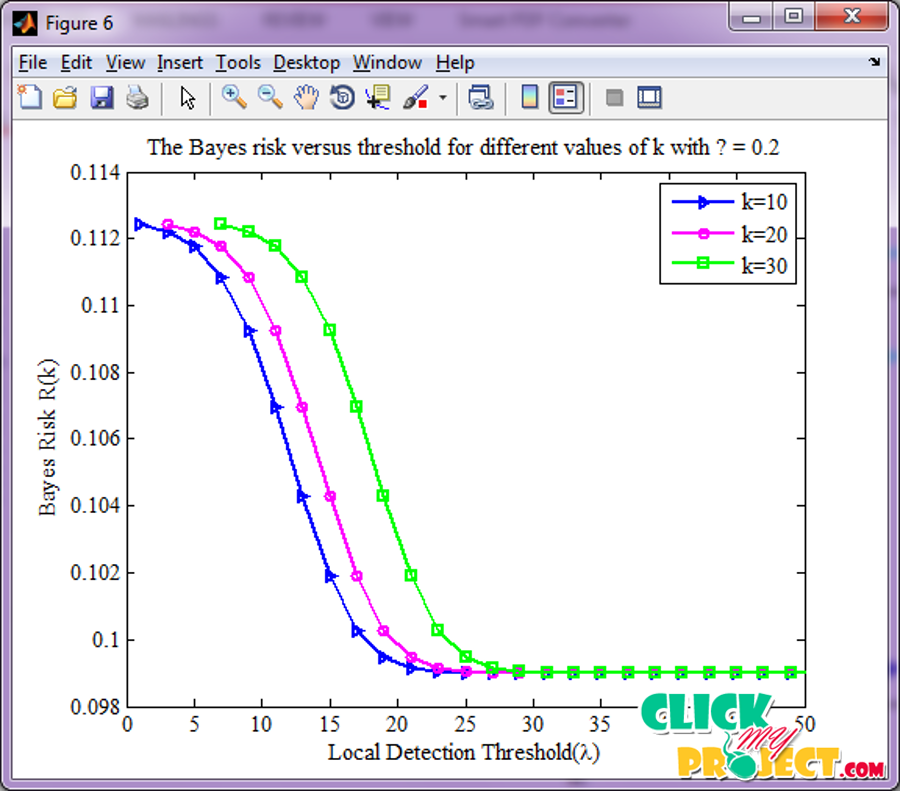Defense Against SSDF Attack in Cognitive Radio Networks Attack Aware Collaborative Spectrum Sensing Approach
₹3,500.00
10000 in stock
SupportDescription
Spectrum Sensing Data Falsifiaction (SSDF) attacks are detected in cognitive radio Networks. In this proposed system, both Primary User and CR users are deployed in the network. Among the CR users needed to detect the malicious users which are intentionally reported wrong information to the fusion center. Here proposed k −out − N rule which are provided the optimal k value that minimized the Bayes risk. Finally attacks strength has been determined by the ratio of the number of malicious users to the total number of users. Security concerns are raised for collaborative spectrum sensing due to its vulnerabilities to the potential attacks from malicious secondary users. Most existing malicious user detection methods are reputation-based, which become incapable when the malicious users dominate the network. On the other hand, although Markovian models characterize the spectrum state behavior more precisely, there is a scarcity of malicious user detection methods which fully explore this feature. Through the Byzantine attack, in which the malicious sensor will send falsified local spectrum inference to mislead the fusion center, the adversary can prevent honest secondary users from using the existing white space, or allure them to access the channels in use and cause excessive interference to legitimate users, thereby undermine the premise of cognitive radio technology. The proposed method is effective even when the malicious users are equipped with more advanced sensing devices. With the assistance of one trusted sensor, the proposed method can provide high detection accuracy and achieve near optimal collaborative spectrum sensing performance for arbitrary percentage of malicious sensors.




